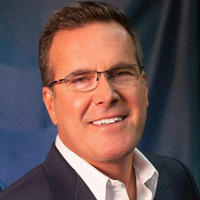NTF 2020 | Broadcasters Explore Cloud Options For News
Live production workflows for news will eventually make their way to the cloud, as broadcasters look to take advantage of the flexibility and efficiency of running software applications that can be accessed from anywhere. But getting there is going to require faster technology development from vendors and perhaps some new financial thinking from their customers, according to technology experts speaking Dec. 17 at TVNewsCheck’s NewsTECHForum.
Sinclair Broadcast Group is already relying on the cloud for some master control functions today, having moved playout of the diginets Comet, Charge! and TBD to the Amazon Web Services (AWS) platform using Imagine control software early this fall. Now the company, which runs 190 TV stations, 23 regional sports networks and cable network Tennis Channel, is investigating what production workflows make sense to move into the cloud.

Mike Kralec
Storage is the “low-hanging fruit,” according to Mike Kralec, VP of technical operations and deputy CTO for Sinclair, who spoke on the panel session Advances in Cloud and IP Workflows, moderated by this reporter. Cloud vendors have gotten better at hierarchical storage management (HSM) and the cost of on-premise versus cloud storage is now very close, Kralec said. And storing assets from Sinclair’s various properties in the cloud would make finding and repurposing them easier.
“Storage is really an area where we’ve proven out that if we can make it fit as part of the workflow, then cloud-based storage, the reduction of operational complexity lets us benefit from the efficiency of the cloud,” Kralec said. “The other area we’re taking a hard look at it right now is where media traverses the cloud for us. Where we already have remote capture, people in the field, things like that. If the video is transported through the cloud in the first place, we would like to look at how we can lighten the reliance on equipment deployed at the television station and take advantage of that traversal to make our production workflows simpler.”

Concetta Maratta
Before the COVID-19 pandemic hit last March, ABC News was already evaluating what workflows it could take to the cloud as it prepares to move to a new broadcast center in downtown Manhattan. Pre-and post-production were the first targets, said Concetta Maratta, executive director of production systems technology support for ABC News, as live workflows still have latency challenges in the cloud. But that work sped up as ABC moved to remote production, deploying virtual desktops for its editing and graphics environments.
“The pandemic definitely accelerated our shift,” Maratta said.
Vizrt has been working for several years on running its asset management and graphics software in virtual environments. Before COVID-19, the company had several proofs-of-concept (POCs) with customers running asset management in cloud with a hybrid model of on-prem and cloud storage, taking advantage of the Network Device Interface (NDI) technology Vizrt gained when it acquired NewTek in April 2019.
But cloud development took off when the COVID-19 lockdowns happened, said Brian Olson, sales director, U.S. group stations for Vizrt, accelerating the company’s go-to-market deployment by one-and-a-half to two years. Within a month, Vizrt completely changed the emphasis of all of its R&D and product planning toward cloud production.

Brian Olson
“Once COVID hit they were full throttle and went from POCs to actually implementing and putting stuff into play for various programs,” Olson said. “We have multiple Tier One broadcasters doing live production out of the various cloud platforms. So that really accelerated things dramatically for us.”
While Vizrt seems to be moving fast toward making cloud production feasible, in general the pace of development isn’t as fast among legacy broadcast vendors as it needs to be, Kralec said. He said that working in the cloud requires a different architectural approach, with the ability to update software on a daily basis if needed. And vendors aren’t necessarily willing to be as flexible and adaptable in the cloud as Sinclair is.
“I’m concerned,” Kralec said. “What we’ve found is the POCs become the opportunity for the vendor to really pressure-test the software in the cloud. It takes the broadcaster to push it, and when we get there a lot of times the assumptions are incorrect.”
Maratta agreed that a “lift and shift” approach to news production software won’t work in the cloud. To be successful will require new thinking from vendors, or perhaps new vendors altogether.
“There are architectural differences that need to be taken into account,” she said. “We may be looking for vendors that we wouldn’t have looked at before, because the problems we’re solving are different and we have new considerations, and so we can broaden our search.”
For his part, Olson said that vendors like Vizrt don’t have the use cases internally to fully test their software, and thus need to work with broadcasters to fully develop their systems in real-world applications. He said another stumbling block to cloud workflows is that the prices some cloud platforms are quoting “don’t make sense,” and that large broadcasters like Sinclair need to use their scale as leverage to negotiate better financial terms with the big cloud vendors.
“I think it’s incumbent upon customers to really negotiate and get the deals they need from the cloud providers,” Olson said. “Because they can provide a ton of expertise that you don’t have to have on the ground, especially at the local station level in terms of IT expertise. As long as you can get good connectivity to the cloud, they sort of handle it for you. I think it’s a huge benefit to the industry.”
Read more NewsTECHForum 2020 coverage here.
































Comments (0)